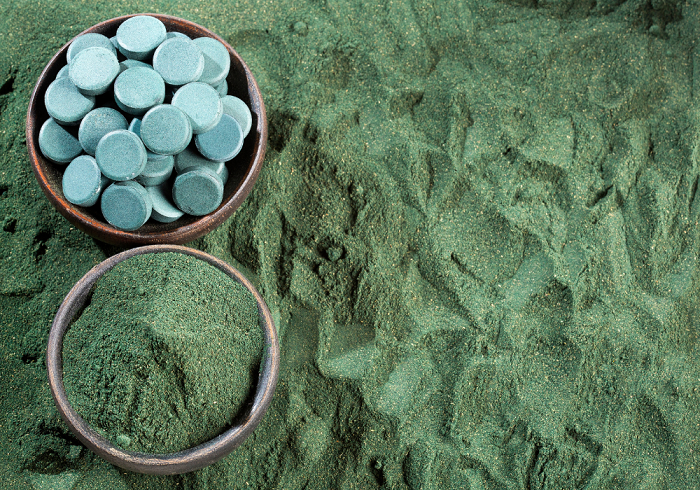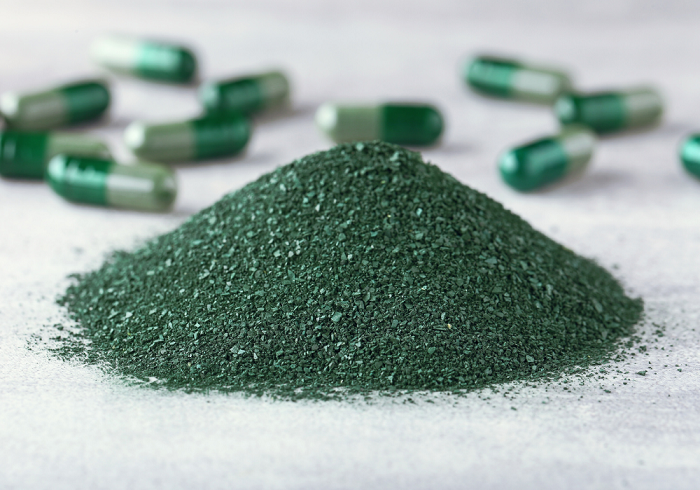The spirulina, a microalga with surprising powers and exceptional nutritional properties, is garnering increasing interest as a superfood. This blue algae can be consumed in various ways thanks to its different forms available on the market, which can therefore affect the cost of purchasing spirulina. But how much does it actually cost? Whether for a quantity of 100 grams or per kilogram, the price of spirulina can also vary according to different factors. In this article, we will explore the different price ranges of spirulina and the elements that influence its cost, to better understand what you can expect when you wish to buy it.
How is the price of spirulina determined? (Origin, quality...)
The price of spirulina is determined by several key factors, including the origin, , the quality, , production methods, , certifications and packaging. Of course, the better the quality of this product, the higher its price, and vice versa. Let's take a closer look at the factors that influence the cost of spirulina:
Origin: Spirulina can be produced in different regions of the world, and its origin plays a crucial role in price determination. Countries with lower production costs can offer more competitive prices. For example, the United States produces 50% of the world's quantities of this blue-green algae, but the production method leaves much to be desired, which exponentially decreases its quality and therefore its price. However, spirulina produced in regions known for their superior quality, such as Hawaii, can be more expensive due to stricter production standards (and transportation costs).
Quality: The quality of spirulina is a determining factor in its price. High-quality spirulina is generally obtained from controlled organic farming. This can be observed in the appearance of the produced spirulina, as it will have a slight algae odor and a dark green color, but not too intense. Appropriate drying techniques must also be used to avoid destroying phycocyanin, the pigment responsible for spirulina's color. These techniques result in higher prices due to the specific practices involved.
Production methods: The mode of production, including the methods of cultivation and harvesting of spirulina, can vary significantly from one producer to another. Some adopt more expensive production techniques, particularly those that require precise control of light, temperature, and water quality to preserve essential nutrients as much as possible. These choices in terms of production methods inevitably reflect in the final price of spirulina.
Certifications and packaging: Certifications, such as organic labels, reflect a demanding quality approach and can increase the price of spirulina. These certifications, based on strict quality criteria, ensure that the spirulina is produced without the use of pesticides or chemical fertilizers. Quality packaging can also differentiate the various brands of spirulina. Attractive packaging, quality certifications, and detailed product information can thus lead to additional costs.

The health benefits of spirulina: Justification of the cost
Spirulina is often considered a superfood due to its nutrient-rich composition, which offers multiple health benefits. These advantages play a crucial role in justifying its price, which is often higher than that of other dietary supplements. Here are some of its main benefits:
1. Rich in protein: Spirulina contains approximately 60 to 70% protein by dry weight, making it an exceptional source of complete plant-based proteins, highly sought after in vegetarian diets. Its protein content makes it particularly valuable for vegetarians and vegans looking to increase their protein intake.
2. Vitamins and minerals: It is also rich in B vitamins, iron, magnesium, potassium, and calcium, as well as antioxidants, which give it anti-inflammatory and antioxidant properties. These compounds help protect against oxidative stress and eliminate free radicals responsible for cellular aging, which can reduce the risk of several chronic diseases.
3. Effects on immune health: Studies suggest that spirulina can boost the immune system, helping the body fight infections and prevent diseases.
4. Anti-cholesterol and cardiovascular potential: The consumption of spirulina has been associated with a reduction in LDL (bad) cholesterol and an increase in HDL (good) cholesterol, thereby contributing to better cardiovascular health.
5. Detoxifying effects: Spirulina is known for its detoxifying properties, particularly its ability to bind heavy metals and promote their elimination from the body, which is beneficial for health and well-being.
What is the price of spirulina in the pharmacy ?
In general, spirulina sold in pharmacies can be slightly more expensive than that available in other points of sale, due to distribution costs and additional fees associated with selling in pharmacies. However, this does not guarantee that this spirulina is of good quality! The price of this algae has no relation to the expected quality. However, its price can start Starting from 8-9 € and can go up to 80 € in all its available forms.
Pharmacies have become a true health supermarket, which could harm the quality of the products sold by making people believe that these products come from a reliable source. Most dietary supplements are currently sold without a prescription, including spirulina tablets. For this reason, it is preferable to inquire about the different brands available at the pharmacists, compare their prices, and know the origin of the product.
What is the price of organic spirulina ?
Organic spirulina tends to be slightly more expensive than conventional spirulina due to the additional production costs associated with organic standards.
The price of organic spirulina can vary from 30 to 70 € per kilogram, or even more, depending on its quality and origin. For a more common quantity of 100 grams, the price can fluctuate between 5 and 15 €. However, these figures are provided for informational purposes and may vary depending on the brands, suppliers, and regions.
Before investing in the purchase of organic spirulina, compare the prices of different brands in natural food stores, specialized online sales sites for organic products, and organic markets to ensure you buy it at an unbeatable price and from a reliable source.
How much spirulina should one consume per day ?
We have already discussed in detail the appropriate amount to consume per day in our article " How to consume spirulina? (6 uses) ", you can take a look at it if you haven't read this article yet. However, the recommended daily dose varies from 1 to 3 grams per day, which is equivalent to approximately 1 teaspoon to 2 of spirulina powder, ", or" 2 to 6 tablets per day of 500 mg each.

What is the average price per kilo? (Flakes, powder, liquid, fresh)
As we have seen above, the price of spirulina sold in pharmacies and organic spirulina differ due to several manufacturing factors. The different forms of spirulina can also affect its price. Here is a general estimate of the average prices per kilogram for each form of spirulina:
Spirulina flakes: The average price per kilogram of spirulina flakes is between 40 and 80 €. This form is generally expensive because it requires more processing steps, in addition to its brand and origin.
Spirulina powder: The price of the spirulina powder varies between 30 and 70 €, The powdered form requires fewer processing steps and can be stored for a long time, which significantly reduces its price per kilogram. Spirulina powder has a variety of uses and is commonly used in smoothies, juices, soups, sauces, and culinary preparations.
Liquid spirulina: Liquid spirulina is a concentrated form of spirulina that is generally used as a dietary supplement for athletes (phycocyanin). The average price per kilogram is between 50 to 90
Fresh spirulina: "La" fresh spirulina is a less common form of spirulina because it requires quick harvesting and distribution due to its fragility. It is generally more expensive than other forms of spirulina, with its price ranging between 120 and 170 € per kilogram, but it is also much more concentrated and effective.
What is the average price for 100 g? (Flakes, powder, liquid, fresh)
As with the price per kilogram, the price for 100 grams of spirulina varies between powder, flakes, and liquid forms. The price is, of course, lower with this quantity, making it accessible for people who wish to consume spirulina on a small budget. Here is the price range for these 3 forms:
Spirulina flakes: The average price for 100 grams of spirulina flakes is generally between 10 and 25 €.
Spirulina powder: The average price for 100 grams of spirulina powder is generally between 8 and 15 €.
Liquid spirulina: The average price for 100 grams of liquid spirulina can vary further, ranging from 15 to 35 €.
Fresh spirulina: The average price for 100 grams of fresh spirulina is generally understood to be between 20 and 40 €.
Why shouldn't you buy cheap spirulina ?
Low-cost spirulina is often considered low-quality spirulina! Indeed, the processing of this algae requires great care to avoid losing all its nutrients, which necessitates the use of practices that handle this algae with caution and should normally increase its base price. Therefore, spirulina sold at a cheap price has often been processed under poor conditions that do not respect the algae, the environment, or your health. The resulting spirulina will not contain the trace elements, vitamins, and minerals you seek when consuming this superfood.
But be careful, buying expensive spirulina is not a guarantee of good quality! Price is not the only criterion for determining the quality of spirulina; it is up to the consumer to be informed about the origin and certification of the purchased product. In addition to poor processing, some producers use other substances that they mix with spirulina to have a large quantity of product with a low concentration of spirulina. Biovie spirulina is guaranteed 100% spirulina, dried at low temperature and organic.
So, it should be noted that price is not the only indicator of the quality of spirulina, but it is generally advisable to avoid buying cheap spirulina.
Conclusion
In conclusion, the price of spirulina can vary significantly depending on several determining factors. These factors include its production method, cultivation and harvesting techniques, as well as its organic certifications and other quality labels that ensure pesticide-free and environmentally friendly production. By considering all these elements, consumers can understand the price variations of spirulina in the market and make informed choices based on their needs and values regarding quality and sustainability.








